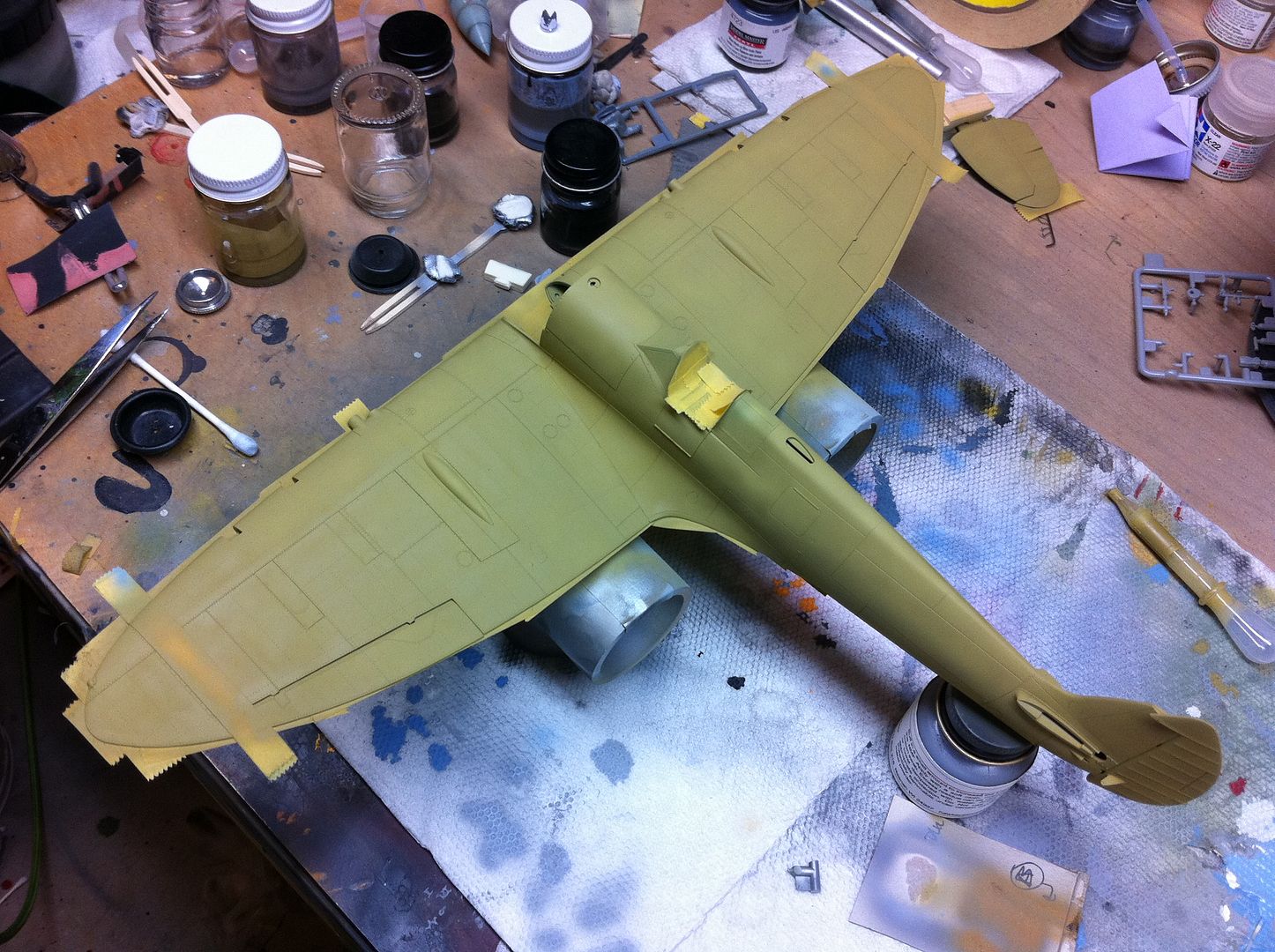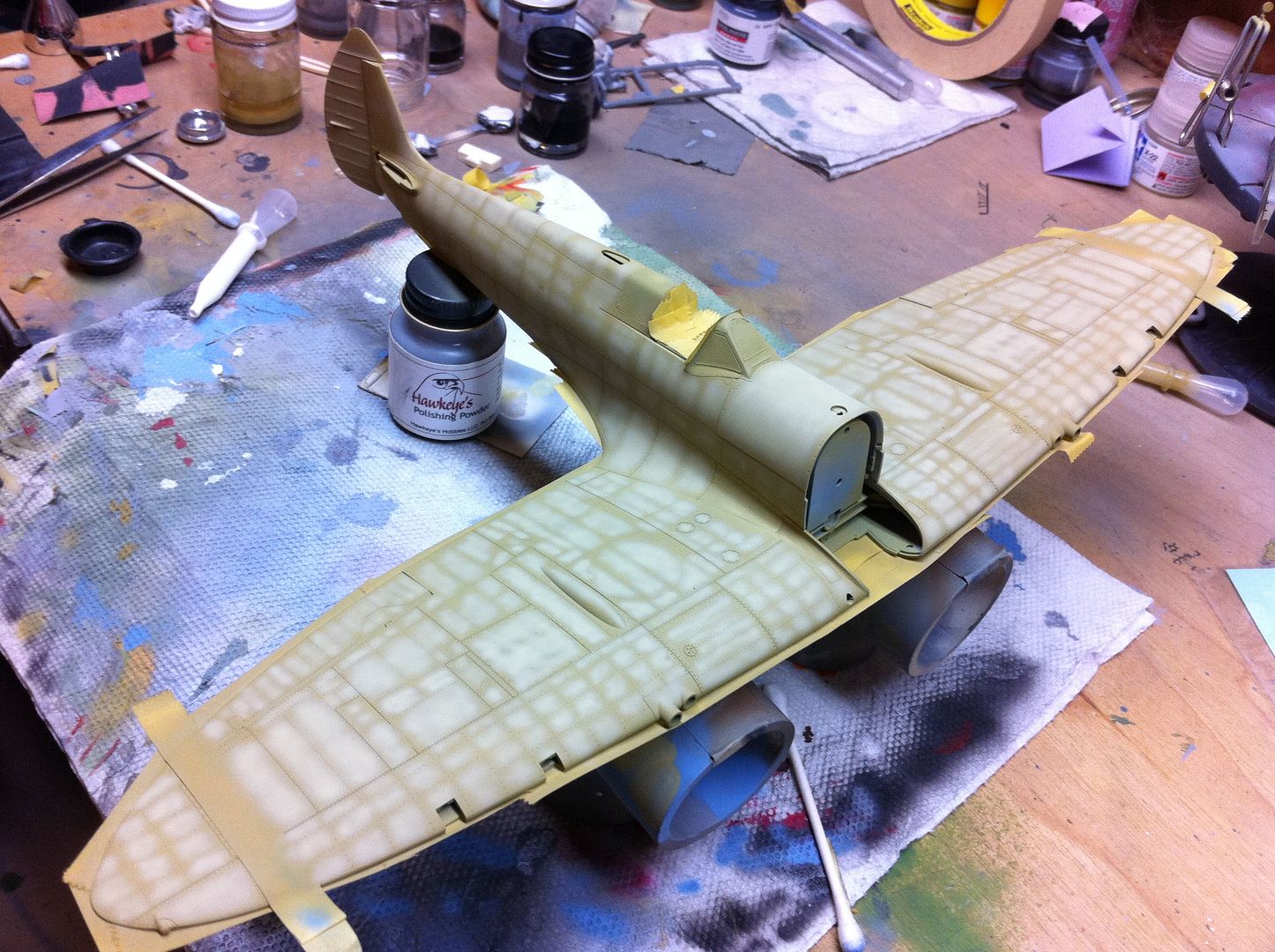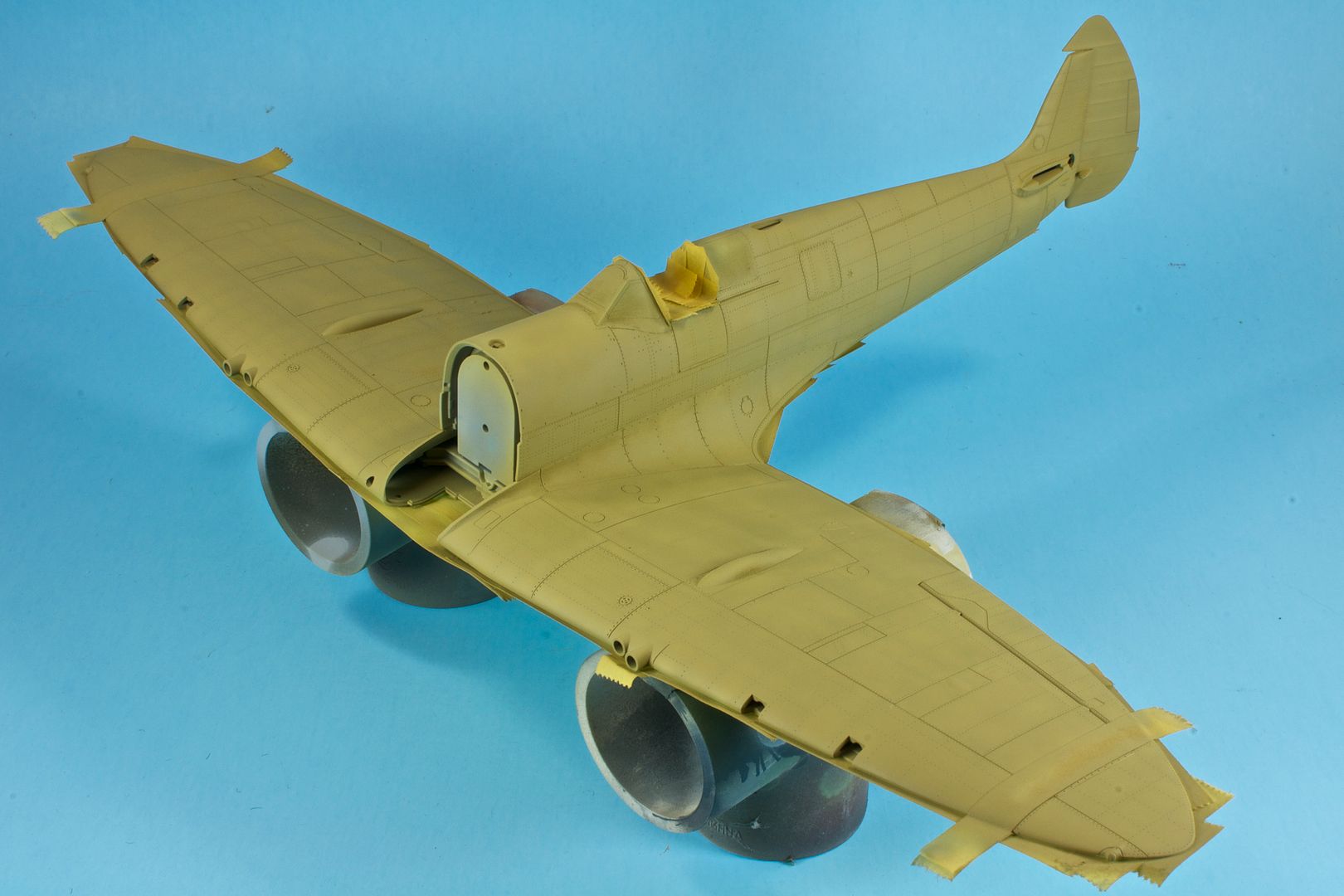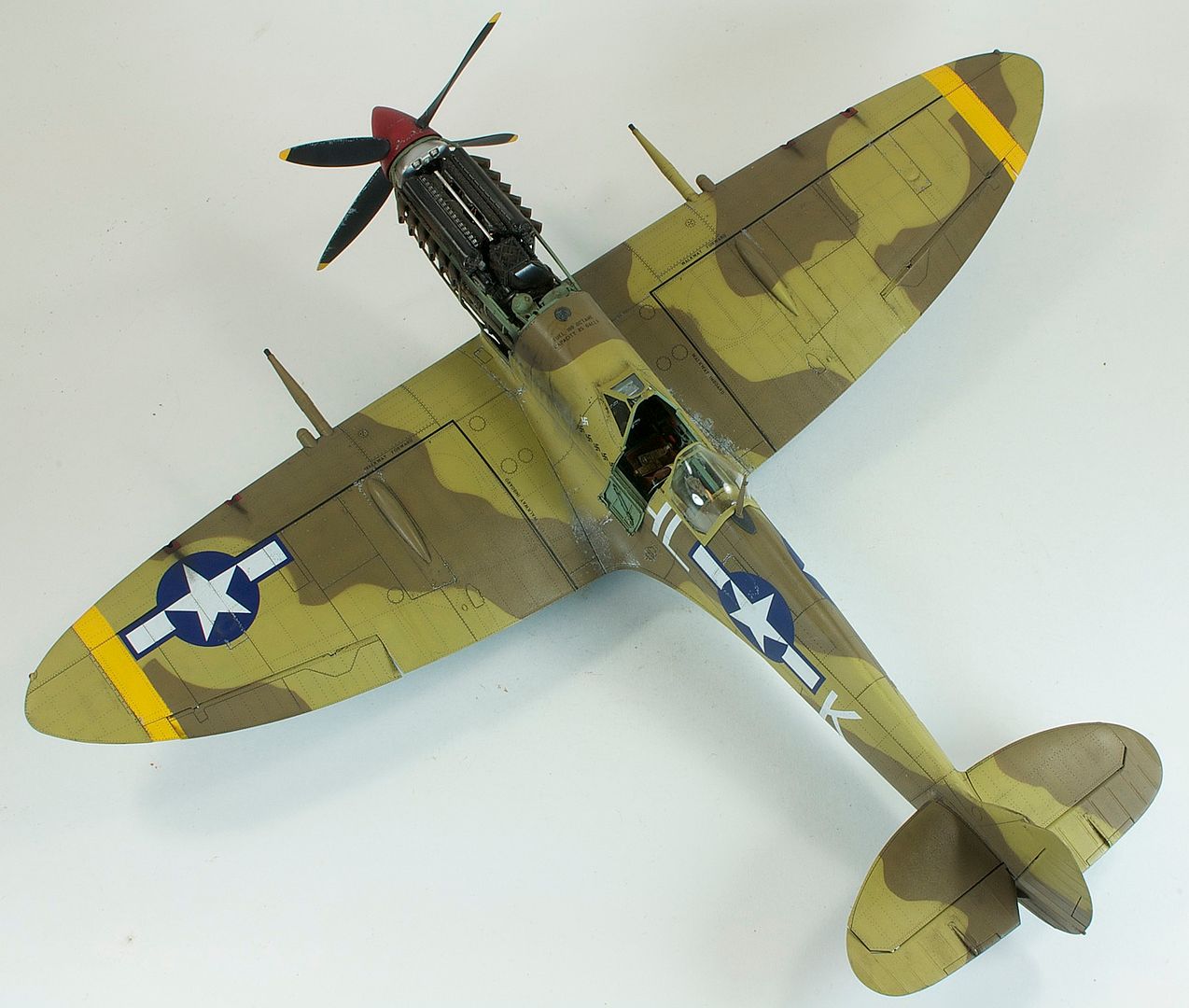DogTailRed2
Less pressure, moving closer is probably the answer but it's a double edged sword. Trying to cover a large area, say a Lancaster wing, means as I move closer the band of paint gets smaller and I end up `striping` the paint on.
If I might offer a suggestion? It's not for everyone, but I know it has certainly helped me a great deal.
Unless you are going for a perfectly uniform color like the chrome yellow wings on a pre-war Wildcat or an air racer or something...try building up a paint job in several light layers of slightly different shades. You won't have to worry about striping in the end, and you'll have a paint job that has depth and character.
Step 1 - Base coat. Go light. I divide what I'm painting into sectors (wing, left cowl, etc), then divide those sectors by their panel lines. Outline, then fill in. Or you can do back-and-forth. Basically take the strategies you'd use for mowing a lawn and apply them to the aircraft. Finish one, move on to the next. Come back later with another light coat. And another if needed.

Step 2 - Base coat + 25-50% white depending on color. Spray this in the center of panels (or along raised areas for fabric surfaces), working out but avoiding the panel lines. Feel free to leave some panels untouched, or do some random striping in the direction of airflow as desired. Things will look awful at this point.

I should also add that this looks MUCH harder than it really is.
Step 3 - Base coat, heavily thinned. Mist this on gradually. You want it thin enough that it won't cover so much as tint. Several light coats will start to blend the lightened shade back with with the base coat. When you think you're getting close, stop, step away for a few minutes, and come back. Continue with another pass or two as needed.
The end result:


The thing I like about this approach is that the tonal modulation is built into the process, and goes a long way toward obscuring or blending in any striping to the point that it's not noticeable. In fact, I think it adds to the sort of random wear look.
On the Bench: 1/32 Trumpeter P-47 | 1/32 Hasegawa Bf 109G | 1/144 Eduard MiG-21MF x2
On Deck: 1/350 HMS Dreadnought
Blog/Completed Builds: doogsmodels.com